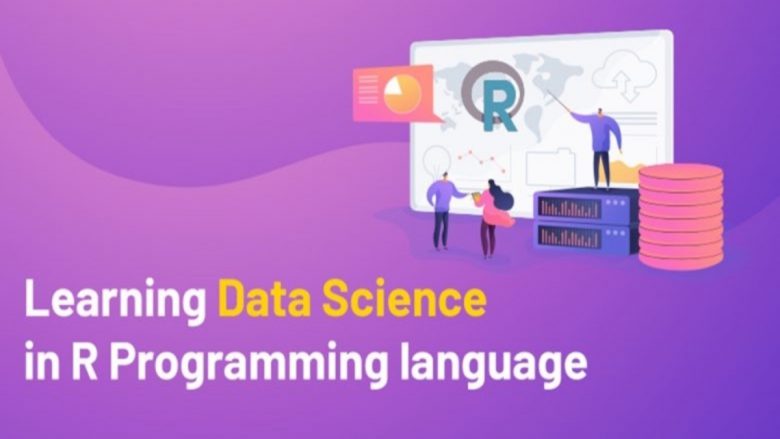
With the progressions in present-day registering, the quantity of internet users has soar making a tremendous portrayal on the lookout. Today, petabytes of data are gathered, put away, and dissected by different organizations like real-time features, organizing applications, research foundations, promoting offices, E-trade, and then some. These organizations for investigating the data and putting it to some utilization require data researchers with legitimate ranges of abilities and data on cutting-edge data science ideas.
Your capability to measure and concentrate significant data by crunching crude datasets will make you stand apart from the group and increment your opportunities to thrive in your vocation in this well-known industry. You can additionally upgrade your abilities through different Data Science certifications and ventures with genuine applications.
Data science is a multidisciplinary field, which implies you must be acceptable at numerous things like programming, arithmetic, data set administration, distributed computing, measurements, and so on in programming, there are two most popular dialects for data science, Python and R. In this blog, we’ll examine R programming dialects, how it’s not quite the same as python, and what benefits it gives to data researchers.
What is R?
R is an open-source programming language that is essentially utilized for numerical estimations, factual examination, and data perception in data science. It highlights broad correspondence libraries and bundles that empower data examiners to data dissect and convert the accessible data into the graphical structure. It’s a stage free language and accompanies an assortment of bundles extraordinarily intended for data examination and representation
R separates complex assignments into little methodology with the goal that the engineer can without much of a stretch program and construct data models. Besides, R has an enormous local area of designers and data researchers prepared to help the users and offer important data from one side of the planet to the other. You can without much of a stretch gain proficiency with the language as there are numerous R Tutorial and open-source projects on the internet you can chip away at.
Python versus R programming language for Data Science
The following are the central issues that assist you with understanding the distinction between Python and R:
| Python | R |
| Python is essentially utilized for building and sending data examination models | R is principally utilized for factual investigation and data representation. |
| Best for the activities that should be worked from scratch | R highlights numerous libraries utilized widely for data science applications. |
| Python has a smooth and learning curve | The expectation to absorb data for R is really steep. |
| Can without much of a stretch be coordinated into various applications that further develop portability | R must be incorporated locally, hence fabricating APIs is beyond the realm of imagination. |
| Intended to be principally utilized by engineers and programmers. | Specially intended for analysts, data researchers, and researchers. |
| A portion of the well-known Python libraries for data science is TensorFlow, sci-unit learn, pandas, Keras, NumPy, scipy, caret, etc. | R bundles for data science incorporate ggplot2, mlr3, Knitr, dplyr, tidyverse, gleaming, and XGBoost. |
Advantages of Using R for Data Science
R gives a few advantages, particularly in case you’re utilizing it for data science. Some of them are recorded beneath:
- Simple to learn
R isn’t simpler to learn when contrasted with python, however, it’s a lot simpler to learn when contrasted with different Data Science programs like Stata and Scala. With bundle assortments like tidyverse, the designer Hadley Wickman made R a lot simpler to learn and work with.
- Availability
R gives bundles like Kaggle and Xgboost that empower you to make AI models and convey them on different stages. Projects data in c++, java, python, javascript, and so on can be incorporated with RStudio where you can add various data science and AI highlights. R can likewise be associated with databases like Hadoop, SQL Server, and flash, which improves data availability and decreases the intricacy of your models.
- Opensource
As referenced before, R is an open-source programming language and can be utilized by anybody all throughout the planet. These outcomes in the data researchers and engineers can add greater usefulness, make libraries and bundles dependent on available necessities. Likewise, it becomes simpler for individuals to work on the activities and add them on stages like GitHub. This one element of R language would extraordinarily further develop your expectation to absorb data as you get enormous local area backing and open-source activities to chip away at.
- Elite
For any business or individual, getting elite and exact outcomes while setting aside time and cash is the main need. Projects wrote in R dialects advance comprehensibility, convenience, and require less computational ability to deliver precise outcomes.
- Notoriety
Although python is selected as one of the best 5 programming dialects, R is a more specialty programming language with regards to data change and data investigation. Most data researchers in different associations use R as their essential language for data science applications. Large data science projects in any association are conceivable dependent on R. In this manner, you’ll have more freedom for your vocation as a data scientist if you get familiar with the R language.
Last Thoughts
Even though python and R are both viewed as similarly significant for up-and-comers guileless to data science, learning R will grow your insight in both programming and measurements. There are numerous assets accessible to assist you with learning the nuts and bolts and fortify your abilities in data science. R is a specialty programming language and eventually, you’ve to learn it to propel your profession as a data scientist.
Learn more from development and Step by Step Instructions to Get a File Extension in Python?


